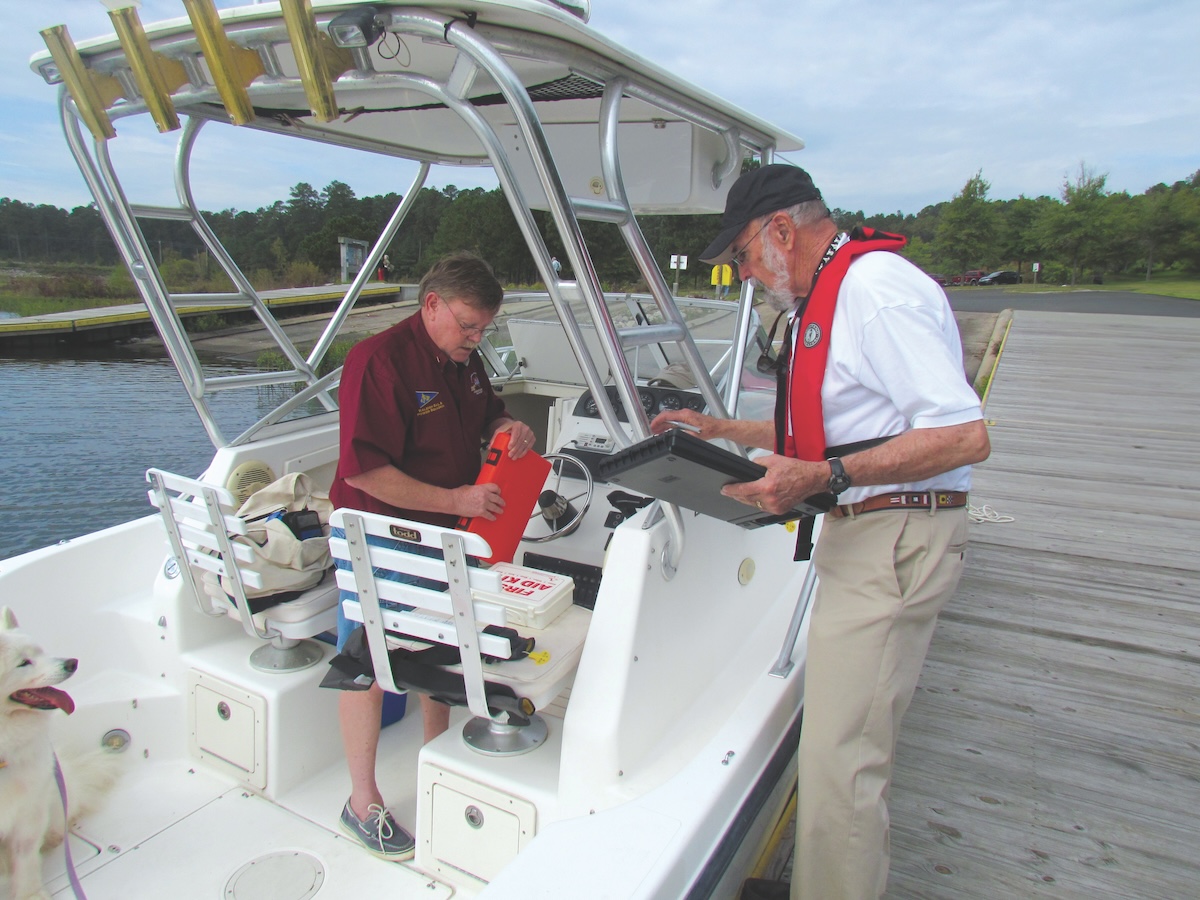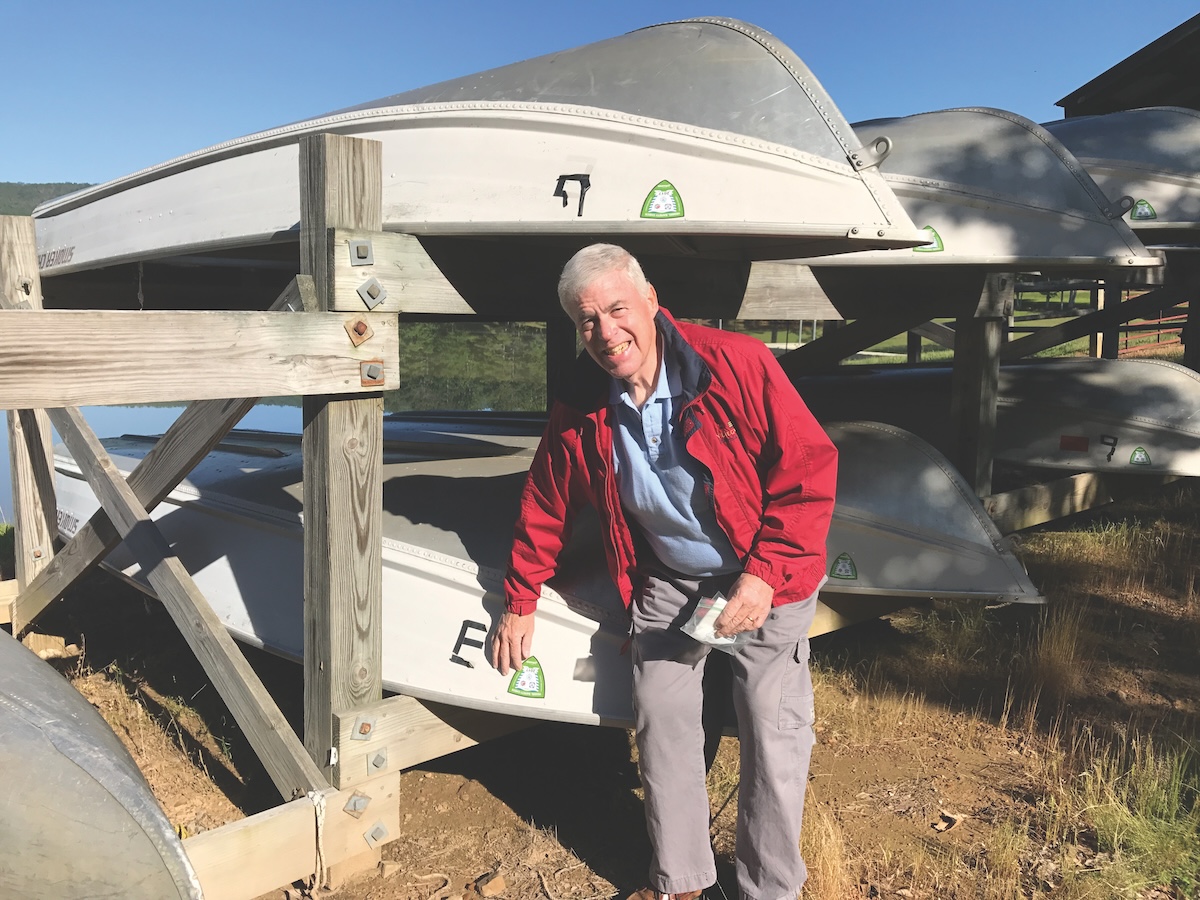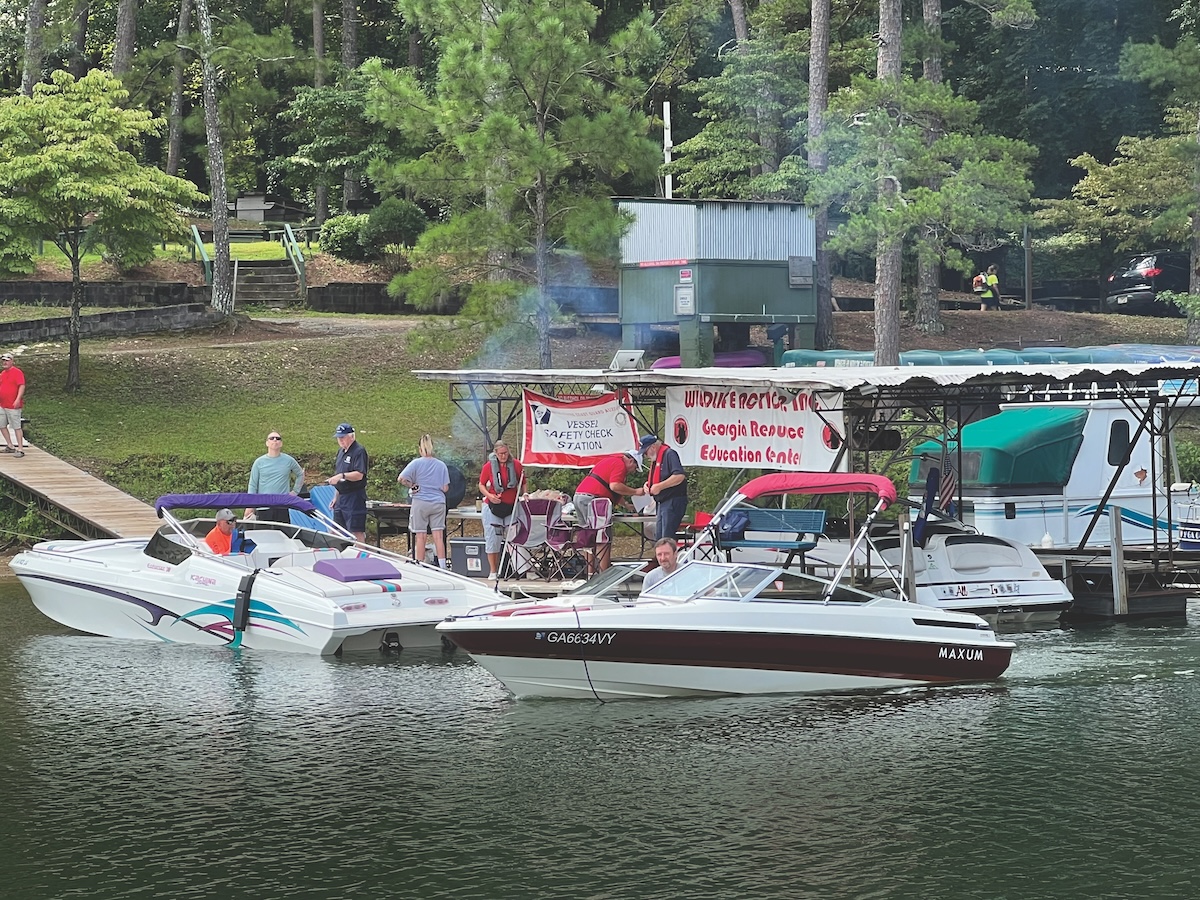
Updated name, same core mission, as United States Power Squadrons looks to grow.
The United States Power Squadrons (USPS) was at a crossroads.
It had an identity problem. While many had heard of the 110-year-old group, market research in 2022 revealed that a lot of people had no idea what exactly USPS is and does, says Director of Marketing Tammy Brown. That led to a further study that resulted in a recent name shift and logo change to become America’s Boating Club, though the U.S. Power Squadrons remains as the legal entity and continues to be part of what Brown describes as dual branding.
“When people say, ‘Who are you with?’ we say ‘America’s Boating Club/United States Power Squadrons,’” Brown explains. “When you see us at an event, you’ll normally see both names in the same place It’s a lot to say… but it connects together and there’s a memory there [that] ‘They’re the people that teach boating instruction across the country.’”
The U.S. Power Squadrons was originally formed as a recreational boating organization in 1914 when representatives of multiple yacht clubs came together at the New York Yacht Club to establish this national group that was as much about camaraderie as recreational boating safety. Over time, the USPS took on various roles from supporting war efforts to providing boater education — the latter being a key and expanding function today.
Right now, America’s Boating Club/U.S. Power Squadrons has about 20,000 members representing some 350 chapters (squadrons) across the U.S. That’s down from 25,000 a few years ago.
“Just like every organization that is membership-based, our trend is downward flowing,” Brown says. While boat ownership grew as the ultimate in social distancing during COVID, people have been returning to their pre-pandemic pastimes, she notes. Statistics from the U.S. Coast Guard show that in 2022 there were 11,770,383 registered recreational vessels across the United States — that’s a 1.6% decrease from the previous year.
The goal now is to reverse the membership decline. To appeal to new members from all sectors of the boating public (including motorized, nonmotorized and human-powered craft like kayaks and canoes) the organization is working on building awareness of the fellowship, education and safety services that have attracted generations of families.
“When we started, we were known for larger vessels, 40 feet and up,” Brown says. “Now our focus is really on recruiting that 35- to 55-year-old member [whose] boats are trailered because that’s where most of the boating population is, especially the new boaters. They’re trailering their boats to the lakes and getting back out of the water and trailering home. That’s where we kind of laser-focus our membership recruitment.”
People are also buying smaller boats. Throw in anglers, who Brown says “don’t really consider themselves boaters” and there’s another market to tap.
Raised in the Club
The 2024 president of America’s Boating Club/ United States Power Squadrons, Ralph Bernard, has had a lifelong association with the organization. After serving in the U.S. Navy during World War II, his dad came home and bought a surplus barge that had been used to transport admirals ashore during the war. His father joined the club in the 1960s, though his mother had to wait until women became eligible for membership in 1982.
Living in New Jersey, the family’s recreational life very much revolved around boating. That was the case whether they were cruising on the Chesapeake Bay or the Great Egg Harbor River where Bernard, now a retired state trooper, still lives. His family participated in multiple club events. They even went to the 1964 World’s Fair by boat from their home in South Jersey.
“It was always if mom and dad went, we went too, until we went off to college,” Bernard says. “We were as involved as they were. We did the work, we cleaned up, prepared for social events and we took courses.”
Bernard was 12 when he completed a 10-week USPS boating safety course.
“I had no idea how to chart a course or what dead reckoning is,” he says. “It made me a whole lot more confident.”
Upon returning from serving in the U.S. Air Force in 1979, Bernard joined USPS.
“You became part of the organization — either teaching courses or taking courses, participating in social events,” he says. “We were very involved all the time.”
Both of his grown daughters are now boat owners and members. Two grandsons, ages 19 and 20, are also members and capable boaters who have earned their first “merit marks” for service to the organization. Bernard also has two granddaughters — one’s too young to be a member yet, but he knows she will when the time comes.

Credit Nan Ellen Fuller
Credit Nan Ellen Fuller
Focus on membership
As president, Bernard is focused on growing membership to expand the America’s Boating Club/U.S. Power Squadrons educational programming. The organization provides an introductory class called America’s Boating Course that Bernard and Brown say goes far beyond the minimum most states accept.
“Many states require and offer basic boating education courses,” notes Brown, “but we believe America’s Boating Course offers a more comprehensive educational experience for new and experienced boaters.”
Covering such elements as nautical terms, safety equipment, how to fuel, casting off and operating underway, navigation rules, signals, anchoring, trailering, knots and lines, and a whole lot more, “not only does it keep things safer, but it makes people feel more confident when operating a vessel,” Bernard says.
“Your chances of having an accident are curtailed greatly. It also makes a better experience on the water.”
Additional separate courses focus on topics such as weather, marine navigation and boat handling. Boaters can enhance their skills and knowledge with seminars in technology (radio, GPS and cameras, for example), using nautical charts, paddling, docking, anchoring, handling onboard emergencies and more. There are also webinars on themes that include ocean currents and computer navigation, personal watercraft and living aboard while cruising.
Courses are written and taught by volunteers — all the more reason to build membership, Bernard says.
“The less volunteers we have, the less personnel and resources we have, and it curtails what we can do,” he notes. “If we can grow the organization and get more volunteers, it makes the organization more viable and healthier, but it also provides the community with a better service because we have those extra resources.”
The club provides free annual vessel safety checks as part of a U.S. Coast Guard program that is also available through the U.S. Coast Guard Auxiliary. At a boater’s request, volunteer instructors will board a vessel and conduct an inspection, identifying deficiencies the owner can address.
“We make a date to come back and board your vessel again, and once you pass, you get a sticker,” Brown says, explaining that displaying the emblem signals to the U.S. Coast Guard that the craft has met safety requirements.
Besides participating in social outings and gatherings, the regional squadrons tend to get involved in community service and support civic causes. Members are also eligible for a variety of discounts, including about 40% off boat insurance, Brown adds.
The main source of revenue for America’s Boating Club/U.S. Power Squadrons is from membership dues. The Coast Guard Foundation also provides annual grants that are sometimes in the several million dollar range and help fund the club’s educational efforts including a Boat Life 365 program that features various campaigns designed to promote safety.
A great legacy
Dave Fuller, an avid boater and volunteer with the U.S. Coast Guard Auxiliary currently serving as its national director of education, became a U.S. Power Squadrons member in 2010. He says that while the Coast Guard Auxiliary is also focused on education, it mainly provides entry-level curriculum when it comes to the public.
“At the higher than entry-level course, we start diverging into Coast Guard-specific training that the average boater is not going to get into (like) search and rescues,” he explains.
That makes America’s Boating Club/U.S. Power Squadrons advanced courses and other educational resources all the more important, he says.
“You have to be educated… you need to know ‘Do I need to stop, slow down, pass on the right or left of this guy? What actions do I have to take to make sure I don’t run into another person?’” Fuller says. “And there’s a lot of other things: ‘What safety equipment do I need, what is legally required?’”
He cites instances of boaters carrying life jackets that are inappropriate for the setting and type of use. People need to know what to do if there’s a fire. And while a vessel may comply with the basics when it comes to equipment onboard, there are other items boaters should know about to enhance their safety.
All are examples of things they can learn in the club’s classes.
“[The U.S. Power Squadrons] has been a leader for well over 100 years,” Fuller says. “It’s an organization that is focused on boating safety and has been since its inception. It’s got a great legacy.”

Credit Nan Ellen Fuller





